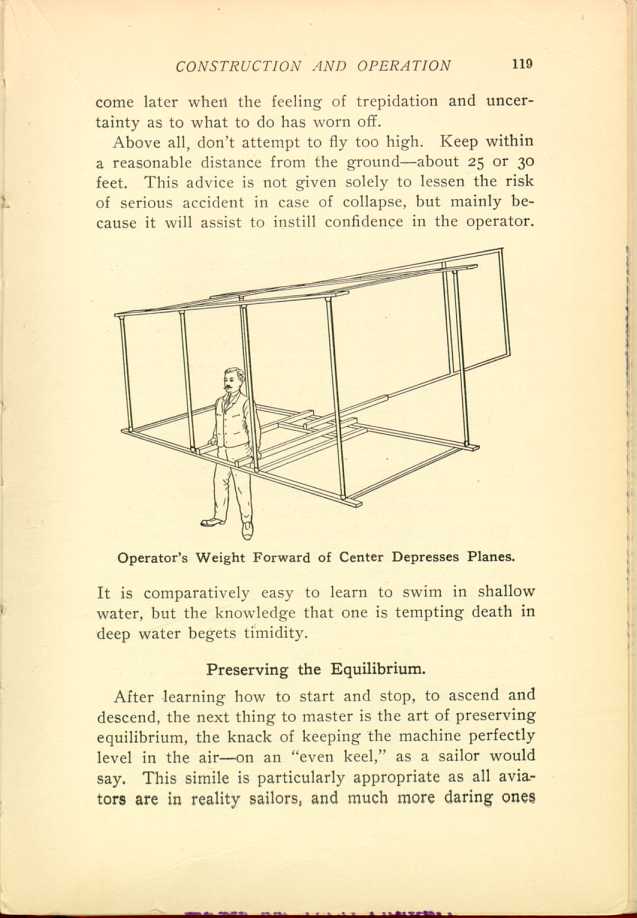| CHAPTER XII.
HOW TO USE THE MACHINE. Flying Machines: Construction and Operation: A Practical Book Which Shows, in Illustrations, Working Plans and Text, How to Build and Navigate the Modern Airship. | ||
Make Your Flights Short.
Be modest in your initial flights. Don't attempt to match the records of experienced men who have devoted years to mastering the details of aviation. Paulhan, Farman, Bleriot, Wright, Curtiss, and all the rest of them began, and practiced for years, in the manner here described, being content to make just a little advancement at each attempt. A flight of 150 feet, cleanly and safely made, is better as a beginning than one of 400 yards full of bungling mishaps.
And yet these latter have their uses, provided the operator is of a discerning mind and can take advantage of them as object lessons. But, it is not well to invite them. They will occur frequently enough under the most favorable conditions, and it is best to have them
Above all, don't attempt to fly too high. Keep within
a reasonable distance from the ground—about 25 or 30
feet. This advice is not given solely to lessen the risk
of serious accident in case of collapse, but mainly because
it will assist to instill confidence in the operator.

Operator's Weight Forward of Center Depresses Planes.
[Description: Black and white illustration: Man in framework of flying
machine, tilting forward.]
| CHAPTER XII.
HOW TO USE THE MACHINE. Flying Machines: Construction and Operation: A Practical Book Which Shows, in Illustrations, Working Plans and Text, How to Build and Navigate the Modern Airship. | ||